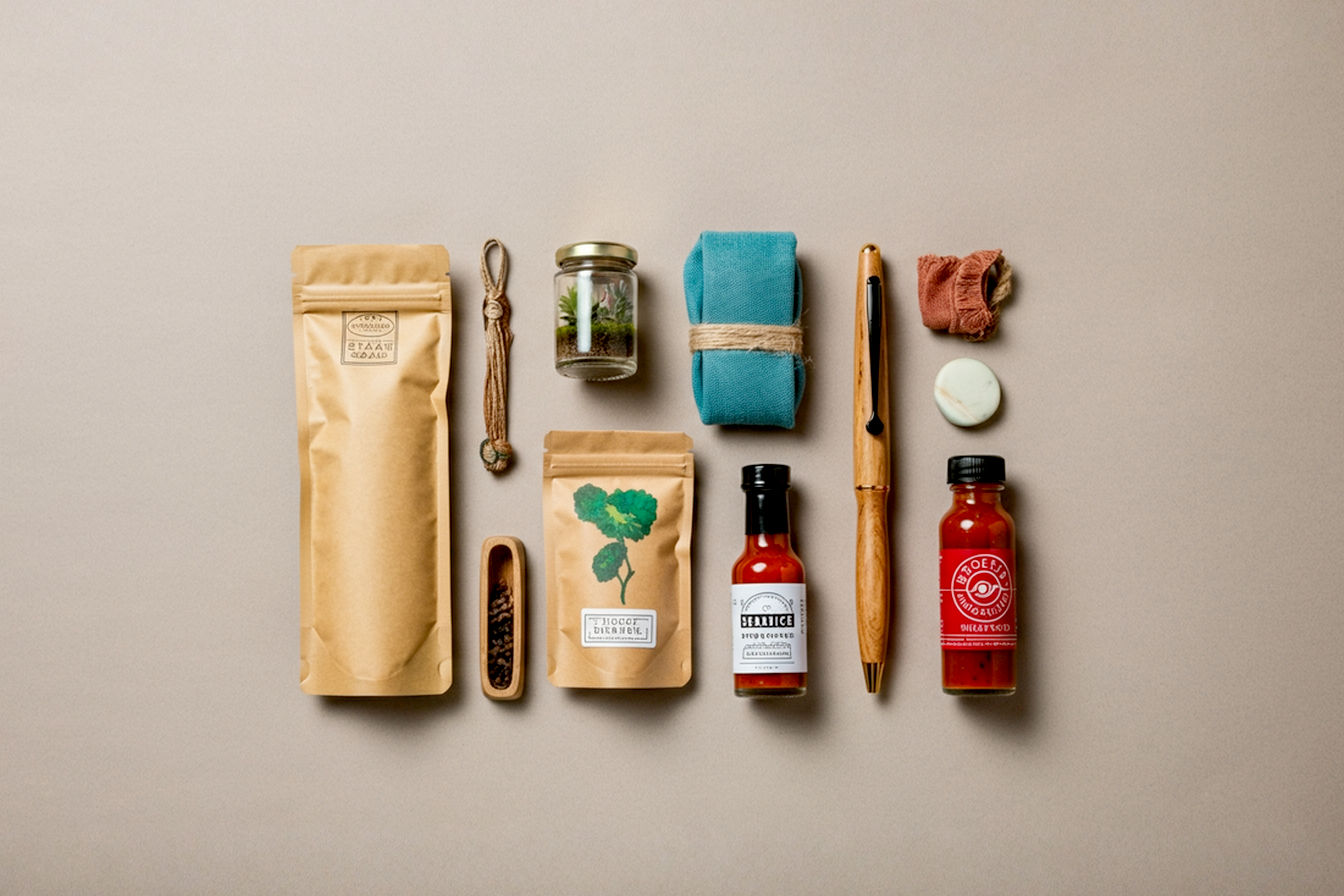This post may contain affiliate links. If you make a purchase through these links, we may earn a commission at no additional cost to you.
Influencer marketing has exploded in recent years, becoming a cornerstone of many successful brand strategies. But with so many creators out there, how do you find the ones who will genuinely connect with your target audience and deliver real results? It’s not just about big numbers; it’s about the right numbers and the right fit. This guide will equip you with the knowledge and tools to find relevant influencers in your specific niche and, just as importantly, vet them effectively to ensure your campaigns are authentic and impactful.
The allure of reaching thousands, or even millions, through a single trusted voice is powerful. However, the landscape is evolving. Consumers are savvy; they crave authenticity and can spot a disingenuous promotion from a mile away. This is where niche influencers—individuals with a dedicated and engaged following within a specific interest area—truly shine. They offer a direct line to a highly targeted audience that trusts their recommendations. This guide is your roadmap to navigating this landscape, identifying those golden-ticket influencers, and building partnerships that resonate.
Understanding the Influencer Landscape: More Than Just Follower Counts
Before diving into the “how-to,” it’s essential to understand who we’re looking for and why the old metrics don’t always tell the full story. The term “influencer” itself has broadened significantly.
Defining “Influencer”: Beyond Social Media Celebrities
An influencer is anyone who has the power to affect the purchasing decisions of others because of their authority, knowledge, position, or relationship with their audience. They’ve built a community around a particular topic and have established credibility and trust with their followers.
It’s crucial to understand the different tiers, as your strategy might involve a mix, or focus on one specific type:
- Nano-Influencers (1K-10K followers)Nano-influencers are everyday people with a smaller but often highly engaged following. They typically have a very strong, almost personal connection with their audience.
- Pros: Highest engagement rates, strong community trust, often more affordable. They feel like a friend recommending a product.
- Cons: Limited reach, may lack experience in professional collaborations.
- Best for: Hyper-niche targeting, building strong community buzz, brands with smaller budgets.
- Micro-Influencers (10K-100K followers)Micro-influencers specialize in a specific niche and are considered experts or highly knowledgeable in that area. They maintain a good balance of reach and engagement.
- Pros: Strong niche expertise, high engagement relative to follower count, more accessible than larger influencers.
- Cons: Reach is still more limited than macro-influencers.
- Best for: Targeted campaigns, brands looking for authentic endorsements within specific communities.
- Mid-Tier Influencers (100K-500K followers)These influencers have a more established presence and a broader reach. They often have experience working with brands and may have a more polished content style.
- Pros: Significant reach, professional content creation, established audience.
- Cons: Can be more expensive, engagement rates might start to dip compared to micro-influencers.
- Best for: Brands looking to scale awareness while still maintaining some niche relevance.
- Macro-Influencers (500K-1M followers)Macro-influencers are often well-known personalities or established content creators with a large and diverse audience.
- Pros: Extensive reach, high potential for brand awareness.
- Cons: Higher cost, potentially lower engagement rates, audience might be less niche-specific.
- Best for: Large-scale awareness campaigns, brands with significant budgets aiming for broad appeal.
- Mega-Influencers (1M+ followers)These are typically celebrities, top-tier bloggers, or social media stars with massive followings.
- Pros: Unparalleled reach, can create instant buzz.
- Cons: Very expensive, lowest engagement rates on average, risk of audience disconnect if the partnership doesn’t feel authentic.
- Best for: Brands aiming for mass-market visibility, often working with celebrity endorsement strategies.
Why Niche Specificity Matters More Than Ever
While a mega-influencer might seem appealing due to their sheer number of followers, their audience might be too broad for your specific product or service. A niche influencer, even with a smaller following, can be far more effective if their audience perfectly aligns with your target demographic. Their followers are there because they’re genuinely interested in that specific topic, making them more receptive to relevant recommendations. Think quality of reach over quantity of followers.
The Evolution of Influence: Authenticity and Trust
Modern consumers are increasingly skeptical of traditional advertising. They are bombarded with marketing messages daily and have become adept at filtering out inauthentic content. This is where the true power of influencer marketing lies: leveraging the trust and authenticity that influencers have cultivated with their communities.
A recommendation from a trusted influencer often feels more like a suggestion from a friend than a paid advertisement. This is especially true for nano and micro-influencers whose relationships with their followers are often more personal. When an influencer genuinely loves a product and their endorsement feels natural, it can drive significant engagement and conversions. This is why vetting for authenticity is just as critical as finding an influencer with a relevant audience.
Phase 1: Finding Potential Influencers in Your Niche
Now that we understand the landscape, let’s get practical. Finding the right influencers requires a strategic approach, combining manual research with the smart use of available tools.
Defining Your Ideal Influencer Profile
Before you start searching, you need to know who you’re looking for. This means aligning your influencer search with your overall brand values and campaign goals.
- Aligning with Your Brand Values and Goals:
- What are your campaign objectives? Are you aiming for brand awareness, lead generation, direct sales, or content creation? Your goals will dictate the type of influencer and content you need. For example, if sales are the primary goal, an influencer with a strong track record of driving conversions through affiliate links or promo codes would be ideal.
- What is your target audience? Define your ideal customer. What are their demographics (age, location, gender), interests, pain points, and online behaviors? The influencer you choose must have an audience that mirrors this profile.
- What are your brand values and voice? The influencer’s content style, tone, and personal values should align with your brand’s identity to ensure an authentic partnership. A mismatch can feel jarring to both their audience and yours.
- Creating an Influencer Persona: Key Characteristics to Look For: Based on the above, create a persona for your ideal influencer. This might include:
- Niche expertise: Deep knowledge and passion for your industry/topic.
- Content style: Aesthetics, tone (e.g., humorous, educational, inspirational), and quality of their posts, videos, or articles.
- Engagement patterns: Do they actively respond to comments and engage with their community?
- Platform focus: Where does your target audience spend their time? Focus on influencers who are strong on those platforms.
- Past collaborations: Have they worked with similar (but not directly competing) brands successfully?
Manual Search Strategies: Rolling Up Your Sleeves
Manual searching can be time-consuming, but it’s often the best way to uncover hidden gems and get a real feel for an influencer’s content and community.
- Leveraging Social Media Platforms DirectlyEach platform has its own nuances for discovery:
- Instagram:
- Hashtag Research: This is your primary tool. Start with broad keywords related to your niche (e.g., #veganrecipes) and then drill down to more specific, long-tail hashtags (e.g., #easyvegandinnerideas, #plantbasedmealprep). Look at the “Top” and “Recent” posts for these hashtags.
- Competitor Follower Analysis: See who is following your competitors and who your competitors are following. You might find influencers already interested in your space.
- “Suggested For You” Feature: When you find one relevant influencer, Instagram will often suggest similar profiles.
- Explore Page: Pay attention to what Instagram’s algorithm shows you on the Explore page, as it’s tailored to your interests (which should align with your brand’s niche).
- TikTok:
- Hashtag Searches: Similar to Instagram, use relevant hashtags. TikTok’s trends change rapidly, so stay updated.
- “For You Page” (FYP) Analysis: Spend time on the FYP, interacting with content relevant to your niche. The algorithm will start showing you more of what you’re looking for.
- Sound Trends: See which creators are using popular sounds or challenges within your niche.
- YouTube:
- Keyword Searches: Search for terms your target audience would use to find information or entertainment in your niche (e.g., “best budget travel tips,” “beginner photography tutorial”).
- Checking Subscriber/Following Lists: Look at who influential channels in your niche are collaborating with or shouting out.
- Video Comments: Sometimes, aspiring influencers or knowledgeable individuals leave insightful comments, potentially indicating their own expertise.
- X (formerly Twitter):
- Advanced Search: Use X’s advanced search to look for keywords, hashtags, and mentions within specific date ranges or from users in certain locations.
- List Exploration: Many users curate X Lists of experts or influential people in particular fields.
- Relevant Hashtag Tracking: Follow conversations around industry events or trending topics in your niche.
- LinkedIn:
- Ideal for B2B: Search for job titles, skills, or industry keywords to find thought leaders, consultants, and professionals who are active and influential in your business niche.
- Look for authors of articles and posts with high engagement.
- Pinterest:
- Visual Niches: Excellent for finding influencers in areas like DIY, home decor, fashion, food, and travel. Search for relevant keywords and see whose pins are popular.
- Group Boards: Identify influential contributors to popular group boards in your niche.
- Blogs & Forums:
- Niche Bloggers: Search for “top [niche] blogs” or “[niche] + blog.” Many influential bloggers also have strong social media presences.
- Active Community Members: Platforms like Reddit (look for active moderators or highly-upvoted contributors in relevant subreddits) or Quora (experts answering questions in your niche) can be goldmines.
- Instagram:
- Google Search: Your Unsung HeroDon’t underestimate the power of a well-crafted Google search:
- Advanced Search Operators: Use queries like:
"your niche keyword" + "blogger""your niche keyword" + "influencer""your niche keyword" + "instagram account"site:instagram.com "your niche keyword" "contact me"
- Listicles and Roundups: Search for articles like “top 10 [niche] influencers to follow” or “best [niche] blogs of [year].” These often provide curated lists.
- Advanced Search Operators: Use queries like:
- Competitor Analysis: Learning from OthersYour competitors might have already done some of the legwork for you:
- Identify influencers your competitors are working with. Look at their tagged posts, mentions, and any publicly announced partnerships.
- Analyze their successful (and unsuccessful) collaborations. What worked well? What didn’t? This can provide valuable insights for your own strategy. Tools like social listening platforms can help track competitor mentions and influencer activity.
Using Influencer Discovery Tools and Platforms
While manual searching is invaluable, dedicated influencer discovery platforms can significantly speed up the process, especially when dealing with larger campaigns or very specific criteria.
- Overview of How These Platforms Work: Most influencer marketing platforms maintain vast databases of influencer profiles. They allow you to search and filter based on various criteria such as niche, follower count, engagement rate, audience demographics, location, and keywords mentioned in their bio or content. Many also offer analytics and campaign management features.
- Popular Influencer Marketing Platforms (Examples & Key Features)There are many platforms available, each with its strengths. Here are a few well-regarded examples:
- Upfluence: Known for its massive database (millions of influencers across platforms like Instagram, TikTok, YouTube, Twitch, and blogs) and advanced search filters, including audience data, engagement rates, and even psychographics. It also offers campaign management tools.
- Aspire (formerly AspireIQ): Focuses on building communities and fostering authentic relationships between brands and creators. It has robust search capabilities and tools for managing campaigns from outreach to payment.
- Grin: Particularly popular with e-commerce brands, Grin integrates directly with major e-commerce platforms (like Shopify, Magento) and focuses on managing relationships, product seeding, and tracking sales driven by influencers.
- CreatorIQ: A more enterprise-level solution used by large brands. It offers sophisticated AI-powered discovery, deep analytics, and a focus on proving influencer marketing ROI with advanced reporting.
- BuzzSumo: While primarily a content marketing tool, BuzzSumo is excellent for finding influential authors and content creators who have a strong impact in terms of shares and engagement around specific topics.
- HypeAuditor: Though often highlighted for its vetting capabilities (which we’ll discuss later), HypeAuditor also has a discovery feature that allows you to search for influencers based on quality metrics and audience authenticity.
- Free vs. Paid Tools: What’s Right for You?
- Free Tools/Methods:
- Pros: No cost, good for starting out or very small-scale searches. Manual searching on social platforms is essentially free. Some tools offer limited free versions or trials.
- Cons: Time-consuming, limited data and filtering capabilities, difficult to scale.
- Paid Tools:
- Pros: Save significant time, access to vast databases, advanced search filters, detailed analytics (including audience demographics and authenticity checks), campaign management features.
- Cons: Can be expensive, ranging from a hundred to several thousands of dollars per month depending on the platform and features.
- When to invest: If influencer marketing is a significant part of your strategy, if you need to find many influencers, or if you require deep analytics for vetting, a paid platform is often a worthwhile investment. Start by clearly defining your needs and budget, then explore platforms that offer trials to see if they fit your workflow.
- Free Tools/Methods:
Tapping into Your Existing Network
Sometimes, the best influencers are closer than you think.
- Your Customers as Advocates: Your most passionate customers can be powerful nano-influencers. Encourage user-generated content (UGC) by running contests or creating a branded hashtag. Monitor who is already talking about your brand positively and has an engaged following, even if it’s small. These are your brand advocates.
- Industry Connections and Referrals: Attend industry events (online or offline), participate in relevant communities, and network with other professionals in your field. Don’t hesitate to ask for recommendations. Someone in your network might know the perfect influencer for your campaign.
Phase 2: The Crucial Vetting Process – Separating Wheat from Chaff
Finding potential influencers is only half the battle. Vetting is where you ensure you’re investing in genuine influence, not just inflated numbers. This critical stage helps you avoid fraudulent accounts and partnerships that won’t deliver results.
Initial Screening: The First Pass
Once you have a list of potential influencers, perform a quick initial screening:
- Relevance to Your Niche: Does their content consistently align with your industry and target audience? A food blogger occasionally posting about tech gadgets might not be the best fit for a software company. Look for a clear thematic focus.
- Content Quality and Professionalism:
- Aesthetics: Is their visual content (photos, videos) high-quality, well-lit, and visually appealing? Does it match your brand’s aesthetic?
- Grammar and Spelling: Frequent errors can reflect poorly on their professionalism and, by extension, your brand.
- Production Value: For video content, is the audio clear? Is the editing competent?
- Posting Frequency and Consistency: Are they active? An influencer who posts sporadically may not have a consistently engaged audience. Look for a regular posting schedule that keeps their followers interested.
Deep Dive into Audience Analysis: Beyond the Numbers
This is where you dig into the data to understand who their audience really is and how engaged they are.
- Audience Demographics: Are They Reaching Your Target?It’s not enough for the influencer’s content to be relevant; their audience must match your target customer profile.
- Key Demographics: Look for data on their audience’s location (crucial if you’re a local business or ship to specific regions), age range, gender, and primary interests.
- Tools for Checking Demographics:
- Influencer Media Kits: Many professional influencers will provide a media kit that includes detailed audience demographics. Always ask for this.
- Influencer Marketing Platforms: Most paid platforms provide this data as part of their analytics.
- Instagram/Facebook Insights: If an influencer has a Creator or Business account, they have access to their own audience insights, which they might be willing to share via screenshots.
- Why it matters: If you sell high-end skincare for women aged 35-55 in the US, an influencer whose audience is primarily male teenagers in Southeast Asia is not a good fit, no matter how many followers they have.
- Engagement Rate: The True Measure of InteractionFollower count can be a vanity metric. Engagement rate shows how actively an influencer’s audience interacts with their content.
- What is Engagement Rate? It’s typically calculated as:
((Total Likes + Total Comments on a set of recent posts) / Number of Posts) / Total Followers * 100For example, if an influencer has 10,000 followers and their last 5 posts averaged 400 likes and 100 comments each:((500 engagements per post) / 10,000 followers) * 100 = 5% engagement rate. - Industry Benchmarks for Good Engagement: These vary by platform, niche, and follower size. Generally:
- Nano (1K-10K): Can be 7-10%+
- Micro (10K-100K): Often 3-6%
- Mid-Tier (100K-500K): May be 2-4%
- Macro/Mega (500K+): Often 1-2%, sometimes lower.
- Important: These are just general guidelines. Research benchmarks specific to your niche. A lower engagement rate isn’t always bad if the audience is highly targeted and the quality of interaction is high.
- Looking for Quality Engagement: Don’t just look at the numbers. Read the comments.
- Are they meaningful and relevant to the post?
- Or are they generic (“nice pic!”, “great post!”) or emojis, which could indicate bot activity or low-effort engagement?
- Does the influencer respond to comments and foster a sense of community? This is a great sign.
- What is Engagement Rate? It’s typically calculated as:
- Authenticity Check: Spotting Red FlagsUnfortunately, follower fraud and artificial engagement are realities in the influencer world. Here’s how to spot potential issues:
- Fake Followers:
- Signs: Sudden, unnatural spikes in follower growth (you can sometimes see this on analytics tools like SocialBlade, though its accuracy can vary). An unusually low engagement rate for a very high follower count. Follower accounts with no profile pictures, generic names (e.g., lots of numbers), no posts, or profiles that only follow thousands of accounts but have few followers themselves. A high percentage of followers from countries irrelevant to the influencer’s niche or stated location.
- Technical Detail – How Follower Audit Tools Work: Tools like HypeAuditor, IG Audit, or features within larger influencer platforms analyze an influencer’s follower base. They look for patterns indicative of bot activity, such as:
- Follower-to-Following Ratios: Bot accounts often follow many accounts but have few followers.
- Account Activity: Inactive accounts or accounts with no posts.
- Username Patterns: Bot-generated usernames.
- Comment Authenticity: Some tools even analyze comment quality. These tools provide an “audience quality score” or a percentage of suspected fake followers. While not 100% foolproof, they offer valuable indicators.
- Engagement Pods:
- What they are: Groups of influencers who agree to consistently like and comment on each other’s posts to artificially boost engagement metrics.
- How to spot them: Look for the same small group of accounts consistently liking and leaving (often generic) comments very quickly after the influencer posts. The comments might seem out of sync or forced. This practice misleads brands into thinking engagement is organic.
- Purchased Likes/Comments:
- Signs: A sudden flood of likes on a post that far exceeds their average. Comments that are completely generic, unrelated to the post content, or written in a different language. These can be bought cheaply and are a clear sign of inauthenticity.
- Follower-to-Following Ratio:
- While not a definitive red flag on its own, an influencer who is following significantly more accounts than they have followers (e.g., following 7,000 accounts with only 1,500 followers) might be using aggressive follow/unfollow tactics to grow, which often results in a less engaged or loyal audience. However, some genuine users do follow many accounts, so consider this in context with other metrics.
- Fake Followers:
Analyzing Content Performance and History
An influencer’s past content provides crucial clues about their style, reliability, and how they handle partnerships.
- Past Sponsored Content: How Do They Integrate Promotions?
- Scroll through their feed or blog to find previous sponsored posts (they should be clearly disclosed).
- Transparency and Disclosure: Do they clearly label sponsored content according to FTC guidelines (e.g., using #ad, #sponsored, #BrandPartner, or the platform’s built-in branded content tools)? This is a legal requirement in the U.S. and many other countries. Lack of proper disclosure is a major red flag.
- Integration Style: Does the sponsored content feel natural and authentic to their usual style, or does it stick out like a sore thumb? The best influencer collaborations seamlessly weave the product or service into their narrative.
- Performance of Past Sponsored Posts: If possible, try to gauge the engagement on their previous sponsored content compared to their organic posts. Some tools or the influencer themselves might provide this data. Consistently low engagement on ads could be a concern.
- Content Alignment with Your Brand: Beyond just their niche, does their overall content aesthetic, tone, and the values they project align with your brand? Would your product or service feel like a natural fit within their feed, or would it seem forced? Authenticity is key for the audience to trust the recommendation.
- Controversial Content or Associations: Do a thorough check of their past content and online presence (including other social media platforms if possible). Look for:
- Any history of offensive, unethical, or controversial statements or behavior.
- Associations with individuals or brands that conflict with your company’s values.
- A quick Google search of their name or handle + “controversy” or “scandal” can sometimes reveal issues. Protecting your brand reputation is paramount.
Assessing Influencer Reputation and Professionalism
How an influencer conducts themselves online and in communication can tell you a lot about what it would be like to work with them.
- Communication Style:
- How do they interact with their audience in comments and DMs (if visible)? Are they respectful, helpful, and engaging?
- Observe their tone in their captions and videos.
- Responsiveness During Initial Outreach: When you eventually reach out (covered in the next section), note how promptly and professionally they respond. A lack of responsiveness can be an early indicator of a difficult working relationship.
- Online Reviews or Mentions: For more established influencers or those who run businesses (like coaching or courses), you might find reviews or testimonials on other sites. Searching their name on X or forums might also reveal what others are saying about them.
Understanding Their Pricing and Collaboration Terms
Before you get too far, you need an idea of their expectations and whether they fit your budget.
- Requesting a Media Kit: Once you’ve shortlisted an influencer and they seem like a good potential fit, it’s appropriate to request their media kit. A professional media kit typically includes:
- An introduction to the influencer and their niche.
- Detailed audience demographics (age, gender, location, interests).
- Follower counts and engagement rates across their platforms.
- Examples of past successful collaborations or case studies.
- Services offered (e.g., Instagram post, Story series, YouTube video, blog post).
- Pricing/Rate Card: Their standard rates for different types of content or packages. Some may provide a range or state that rates are available upon request for specific campaigns.
- Typical Pricing Models:
- Per Post: A flat fee for a single piece of content.
- Per Campaign/Package: A bundled price for multiple pieces of content or a longer-term collaboration.
- Affiliate: The influencer earns a commission on sales generated through a unique tracking link or promo code.
- Product Gifting (Contra): For smaller influencers or in exchange for honest reviews, brands might offer free products or services. Ensure the value aligns with the influencer’s work. This is less common for established influencers for significant campaigns.
- Combination: Some deals might involve a flat fee plus an affiliate commission.
- Negotiation and Ensuring Value: Rates can often be negotiable, especially if you’re offering a long-term partnership or a unique collaboration. Don’t just look at the price; consider the overall value they bring in terms of reach, engagement, content quality, and alignment with your brand.
Phase 3: Effective Outreach and Building Relationships
You’ve found your ideal influencers and vetted them thoroughly. Now it’s time to make contact and propose a collaboration.
Crafting the Perfect Outreach Message
First impressions matter. A generic, copy-pasted message is likely to be ignored.
- Personalization is Key:
- Address the influencer by their name.
- Reference specific content they’ve created that you enjoyed or found relevant. Show them you’ve actually engaged with their work (e.g., “I loved your recent post on X, it really resonated with our brand’s focus on Y”).
- Explain why you think they specifically would be a great fit for your brand and this particular campaign.
- Clearly State Your Value Proposition: What’s in it for Them? Influencers receive many collaboration requests. Make it clear why they should partner with you. This isn’t just about what they can do for your brand, but what your brand can offer them (e.g., fair compensation, a product they’ll genuinely love, exposure to your audience, creative freedom).
- Be Specific About Your Ask (but flexible):
- Briefly outline what kind of collaboration you have in mind (e.g., “We’re looking for an Instagram post and three Stories to promote our new sustainable activewear line”).
- Indicate that you’re open to discussing their ideas and creative input.
- Keep it Concise and Professional: Respect their time. Get to the point, but maintain a friendly and professional tone. Avoid overly casual language unless their brand voice is very informal.
- Proofread! Typos and grammatical errors make your brand look unprofessional. Double-check your message before hitting send.
Where to send it? Many influencers list a business email in their bio. Use that first. If not, a polite direct message (DM) on the platform is acceptable, but keep it brief and suggest moving to email for more detailed discussion.
Following Up (Without Being Annoying)
Influencers are busy. They might miss your initial message.
- Give them reasonable time to respond: Wait at least 3-5 business days before following up.
- A gentle follow-up can be effective: Keep it short and polite. Refer to your previous message and briefly reiterate your interest. For example: “Hi [Influencer Name], just wanted to gently follow up on my previous email about a potential collaboration with [Your Brand]. We’re still very interested in exploring a partnership if you think it’s a good fit. Best, [Your Name].”
- Don’t bombard them: One or two follow-ups are usually sufficient. If you don’t hear back, it’s best to move on.
Negotiating Terms and Finalizing Agreements
Once an influencer expresses interest, you’ll move into discussing the specifics of the collaboration. This often involves some negotiation.
- Key Elements of an Influencer Contract:ALWAYS have a written agreement or contract in place, even for smaller collaborations. This protects both your brand and the influencer by clearly outlining expectations. Key elements include:
- Parties Involved: Full names and contact information for both the brand and the influencer.
- Campaign Overview: A brief description of the campaign goals and theme.
- Deliverables: Be extremely specific.
- Number of posts, stories, videos, articles, etc.
- Which platforms will be used.
- Content formats (e.g., static image, carousel, video length).
- Any specific talking points, keywords, or calls-to-action to include.
- Draft review process and deadlines.
- Posting dates and times (or a window for posting).
- Content Ownership and Usage Rights:
- Who owns the content created by the influencer? Typically, the influencer owns their original content.
- What rights does the brand have to use/repurpose that content (e.g., on their own social media, website, in ads)? For how long? In which territories? Be very clear, as this often impacts pricing.
- Exclusivity Clauses: Does the agreement prevent the influencer from working with direct competitors for a certain period (e.g., during the campaign and for 30 days after)?
- Payment Terms:
- Total compensation amount.
- Payment schedule (e.g., 50% upfront, 50% upon completion; or net 30 days after all deliverables are met).
- Payment method.
- Disclosure Requirements (FTC Guidelines): Mandate that the influencer must clearly and conspicuously disclose the sponsored nature of the content according to FTC regulations (e.g., using #ad, #sponsored, or platform-specific branded content tools). This is non-negotiable for legal compliance.
- Reporting and Metrics: What metrics will the influencer be expected to provide after the campaign (e.g., reach, impressions, engagement, link clicks)? How and when will these be reported?
- Approval Process: Outline how and when the brand will review and approve content before it goes live.
- Termination Clauses: Conditions under which either party can terminate the agreement (e.g., breach of contract, failure to deliver).
- Confidentiality: If sensitive information is shared.
- The Importance of a Written Agreement: A contract minimizes misunderstandings, sets clear expectations, and provides legal recourse if things go wrong. For complex or high-value collaborations, consider having a legal professional review the contract. Many templates are available online, but ensure they are customized to your specific needs.
Measuring Success and Building Long-Term Partnerships
The work isn’t over once the content goes live. Measuring the impact of your influencer campaigns is crucial for understanding ROI and refining future strategies.
Key Performance Indicators (KPIs) for Influencer Campaigns
The KPIs you track should align with the initial goals you set for the campaign.
- Reach and Impressions:
- Reach: The number of unique individuals who saw the content.
- Impressions: The total number of times the content was displayed (one person could see it multiple times).
- Why they matter: Good for gauging brand awareness and the potential size of the audience exposed to your message.
- Engagement Rate (on sponsored content):
- Likes, comments, shares, saves, clicks on the sponsored posts.
- Calculate this specifically for the campaign content to see how well it resonated.
- Why it matters: Shows how actively the audience interacted with your brand’s message through the influencer.
- Website Traffic and Referrals:
- Use UTM parameters in any links the influencer shares.
- Technical Detail – UTM Parameters: These are simple tags you add to a URL. When someone clicks a link with UTM parameters, Google Analytics (and other analytics tools) can track exactly where that traffic came from. For example, you can create a link that identifies the influencer, the campaign, and the platform (e.g.,
yourwebsite.com/product?utm_source=influencer_name&utm_medium=social&utm_campaign=spring_promo).
- Technical Detail – UTM Parameters: These are simple tags you add to a URL. When someone clicks a link with UTM parameters, Google Analytics (and other analytics tools) can track exactly where that traffic came from. For example, you can create a link that identifies the influencer, the campaign, and the platform (e.g.,
- Monitor your website analytics for referral traffic from the influencer’s platforms.
- Why it matters: Directly measures how many people the influencer drove to your website.
- Use UTM parameters in any links the influencer shares.
- Conversions (Leads, Sales):
- This is often the ultimate measure of success for performance-focused campaigns.
- Track using:
- Unique Promo Codes: Give each influencer a unique discount code (e.g., “INFLUENCERNAME15” for 15% off). Track how many times each code is used.
- Affiliate Links: If using an affiliate model, these links automatically track clicks and sales.
- Dedicated Landing Pages: Send influencer traffic to a specific landing page to isolate conversions from that campaign.
- Why it matters: Directly attributes sales or leads to the influencer’s efforts.
- Brand Sentiment and Mentions:
- Use social listening tools (or manual searches) to monitor mentions of your brand in conjunction with the influencer or campaign.
- Analyze the sentiment: Are people talking positively about your brand as a result of the campaign?
- Why it matters: Gauges the impact on brand perception and conversation.
- Return on Investment (ROI):
- Calculate ROI:
((Revenue Generated - Campaign Cost) / Campaign Cost) * 100 - This can be challenging to track precisely if your goals are purely awareness-based, but for sales-driven campaigns, it’s a critical metric.
- Why it matters: Determines the financial effectiveness of your influencer marketing spend.
- Calculate ROI:
Nurturing Relationships for Ongoing Collaboration
Finding a great influencer who delivers results is valuable. Don’t let it be a one-time transaction.
- Beyond One-Off Campaigns: Consider building long-term ambassador programs or ongoing partnerships with influencers who genuinely love your brand and resonate with your audience. This fosters deeper authenticity and can be more cost-effective in the long run.
- Providing Feedback and Support: Share campaign results with the influencer (the good and the areas for improvement). Provide constructive feedback. Offer them support and resources if needed.
- Treating Influencers as True Partners: Value their creative input. Pay them fairly and on time. Communicate openly and respectfully. When influencers feel valued and respected, they are more likely to go above and beyond for your brand.
Common Pitfalls to Avoid in Influencer Marketing
While incredibly effective when done right, influencer marketing has its share of potential pitfalls. Being aware of these can save you time, money, and headaches.
- Focusing Solely on Follower Count: As discussed, high follower counts don’t guarantee engagement or relevance. Prioritize audience quality and alignment.
- Ignoring Audience Authenticity: Failing to vet for fake followers or engagement can lead to wasted budget on campaigns that reach bots, not real people.
- Lack of Clear Goals and KPIs: Without clear objectives, you can’t measure success or determine if your investment was worthwhile.
- Poor Communication or Unclear Briefs: Vague instructions lead to content that misses the mark. Provide clear, concise creative briefs, but also allow for the influencer’s creative input.
- Not Adhering to Disclosure Guidelines (Legal Ramifications): Failure to ensure influencers properly disclose sponsored content can lead to FTC penalties and damage your brand’s reputation. This is a serious legal and ethical responsibility.
- One-Size-Fits-All Approach: Treating all influencers and platforms the same. Tailor your strategy, outreach, and content expectations to the specific influencer and platform.
- Micromanaging Influencers: While clear guidelines are important, trying to control every aspect of an influencer’s content can stifle their creativity and make the promotion feel inauthentic to their audience. Trust the voice you hired.
- Unrealistic Expectations: Influencer marketing is not a magic bullet. Results can take time, and not every campaign will be a runaway success. Set realistic expectations and be prepared to learn and adapt.
Conclusion: Integrating Influencer Strategy into Your Marketing Mix
Finding, vetting, and collaborating with influencers is a dynamic and rewarding process. It’s about building genuine connections – not just with the influencers themselves, but through them, with a highly engaged and targeted audience that trusts their recommendations.
By understanding the diverse influencer landscape, diligently researching and vetting potential partners for authenticity and relevance, crafting personalized outreach, and meticulously measuring your results, you can unlock the immense power of influencer marketing. It’s more than just a trend; it’s a fundamental shift in how brands can connect with consumers in a more meaningful and impactful way.
Remember that successful influencer marketing is rarely a “set it and forget it” tactic. It requires ongoing effort, relationship building, and adaptation. Treat your influencer relationships as true partnerships, foster creativity, and always prioritize authenticity. By doing so, you’ll not only achieve your campaign goals but also build lasting brand advocacy in your niche.






